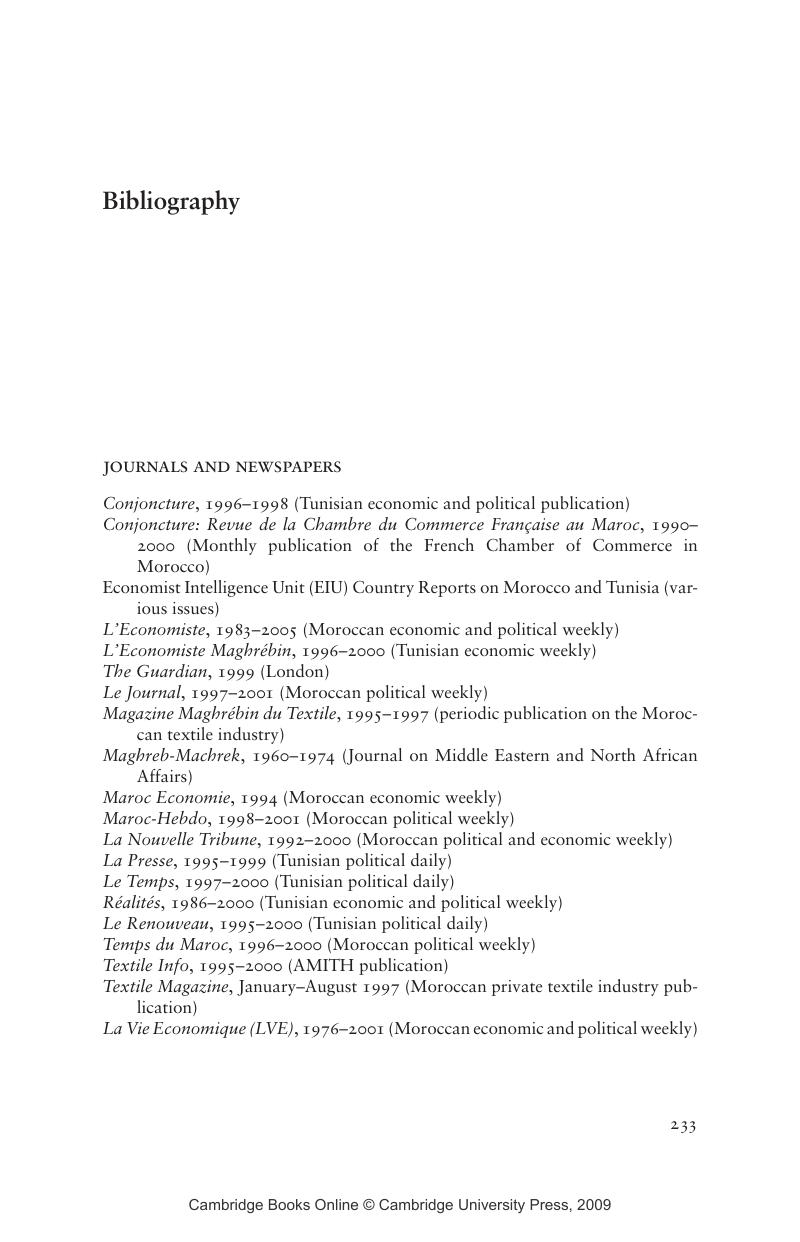Book contents
- Frontmatter
- Contents
- List of Tables and Figures
- Acknowledgments
- List of Abbreviations
- Map of Morocco
- Map of Tunisia
- I THE FRAMEWORK
- II THE INSTITUTIONAL CONTEXT
- III GLOBALIZATION AND INSTITUTIONAL CHANGE
- Appendix A Methodological Note and List of Interviewees
- Appendix B Standardized Questionnaire for Textile and Apparel Industrialists and Factory Managers
- Bibliography
- Index
- References
Bibliography
Published online by Cambridge University Press: 23 December 2009
- Frontmatter
- Contents
- List of Tables and Figures
- Acknowledgments
- List of Abbreviations
- Map of Morocco
- Map of Tunisia
- I THE FRAMEWORK
- II THE INSTITUTIONAL CONTEXT
- III GLOBALIZATION AND INSTITUTIONAL CHANGE
- Appendix A Methodological Note and List of Interviewees
- Appendix B Standardized Questionnaire for Textile and Apparel Industrialists and Factory Managers
- Bibliography
- Index
- References
Summary

- Type
- Chapter
- Information
- Globalization and Business Politics in Arab North AfricaA Comparative Perspective, pp. 233 - 254Publisher: Cambridge University PressPrint publication year: 2007



